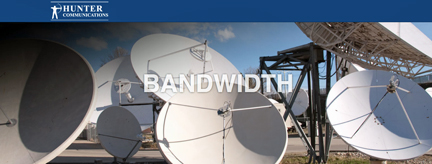
[SatNews] Hunter Communications has teamed with Nanometrics, one of the world’s leading manufacturers of seismology systems and instrumentation, to develop an induced seismic and microseismic monitoring application via satellite for oil and gas drilling sites where hydraulic fracturing ("fracking") is employed.
The application is deployed by the Nanometrics LIBRA very small aperture terminal (VSAT) system to monitor oil and gas drilling sites in real-time to determine whether fracking is triggering or inducing seismicity, either on the drill site or within the region. Exploration geophysicists and seismologists use the LIBRA system to make strategic, real-time decisions about their operations based on the data and analysis they receive from the new application.

Nanometrics initially developed the LIBRA VSAT system specifically for ultra-low power usage, a critical factor when installing systems far from any electrical grid. The LIBRA technology has been deployed at hundreds of remote locations globally to provide real-time monitoring of volcanoes, earthquake zones and fault lines, including diverse locations such as volcanoes in Peru and Cyprus and geological fault lines stretching from Trinidad to Ghana. The critical seismic data is collected by Nanometrics seismometers with its proprietary instrumentation and networking technology and transmitted by satellite through the LIBRA networks. It is delivered in real-time to scientists at universities and governmental organizations worldwide.
"Oil and gas companies are now proactively establishing monitoring sites surrounding their wells, and we are partnering with the scientific community to delve deeper into the science of microseismicity,” said Neil Spriggs, Nanometrics CEO of Global Operations. “Ultimately, we believe that many more of these firms will choose to closely monitor their operations using the real-time data that we provide, which enables them to stop operations if induced events approach the threshold of felt earthquakes.”
The microseismic monitoring system application is currently in use in Northeastern British Colombia where there are a significant number of well operators. Nanometrics and Hunter Communications Canada provide scientists with real-time satellite access to all the data collected from these wells. The data is being analyzed as part of an ongoing research project to study both the short-term and long-term effects that fracking will have on seismic activity in that area.
“It is critical for the scientific community to learn about the effects of hydraulic fracturing and obtain factual data instead of anecdotes and conjecture on whether fracking does indeed cause meaningful effects to the surrounding area,” Spriggs said. “Obtaining this information is a significant benefit, not just for local populations, but also for oil and gas companies, who will use this information to improve their technologies and procedures.”
Several Canadian networks have deployed LIBRA satellite systems, including GeoScience BC, Alberta Energy Regulator and the University of Ottawa Yukon Network. The University of Ottawa turned to Nanometrics and Hunter for a turnkey, real-time seismic network consisting of seven Libra VSAT stations as part of a five-year study to better understand seismicity and crustal behavior in the Mackenzie Mountains and River Basin region of the Yukon. This area is known to be the most seismically active in Canada. Pascal Audet, Assistant Professor, Faculty of Science, Department of Earth Sciences, University of Ottawa, will use the seismic data to determine earthquake patterns and map faults in Canada’s northwest.
“Despite being one of the most seismically active regions in Canada, this area remains very poorly studied due to a lack of seismic station coverage,” Audet said. “This new network bridges that gap and allows us to determine the location and magnitude of small earthquakes very accurately and estimate seismic hazard in this area.”
Brent Perrott, President of Hunter Communications, stated that working with Nanometrics on the many seismic monitoring systems is of critical importance: “These networks enable real-time scientific monitoring, which is improving industry standards and translating into a safer industry.”
For further details, please visit the Hunter Communications infosite at http://www.huntercomm.net/
The Nanometrics infosite is located at http://nanometrics.com/

